| Summer Resident | |
| Has Nested in Park |
Gray Catbirds are common spring migrants in the Washington metro area. They breed throughout the area, including at Monticello Park. Most of them winter in the southern states, Mexico, Central America, and the Caribbean. One day in early May, a plane-load of them seems to arrive all at once.
Where to See Them in the Park
Gray Catbirds are friendly birds, and they can be seen almost anywhere in the park. They usually stay at eye level or below. They often go into the stream, and they sometimes take long baths.
Physical Description
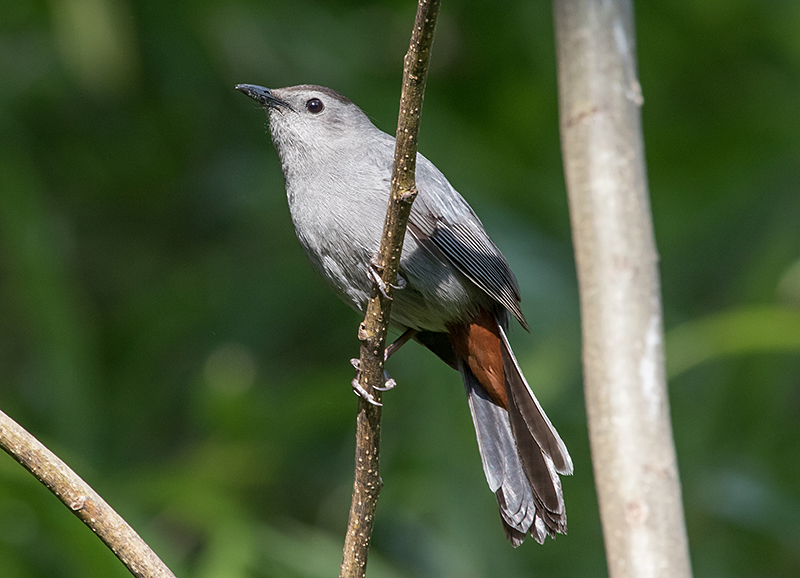
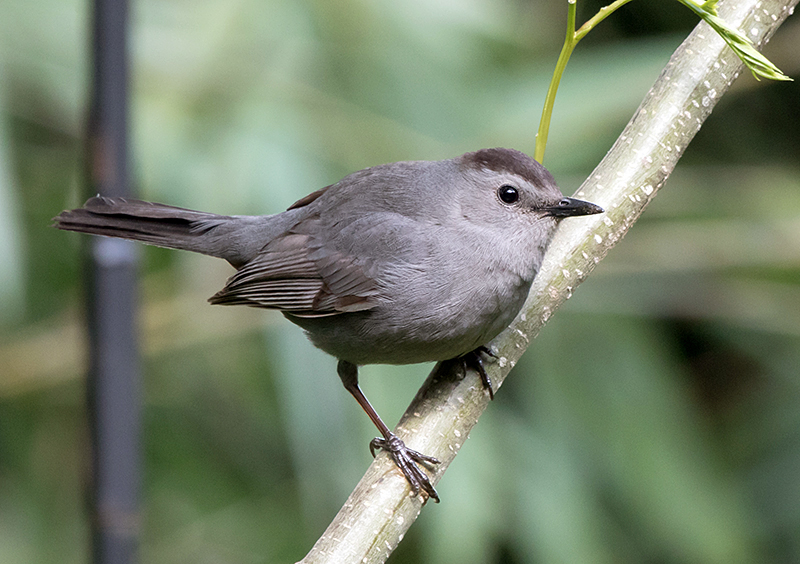

Gray Catbirds are solid gray with a black skullcap. They have rufous feathering under the tail. They are the smallest of the mimic thrushes, about the size of a towhee. The sexes are similar.

The Gray Catbird is one of the species often seen at termite hatches. This video shows a catbird vacuuming up termites. At one small termite hatch at Monticello, a single catbird ate more than 130 termites.
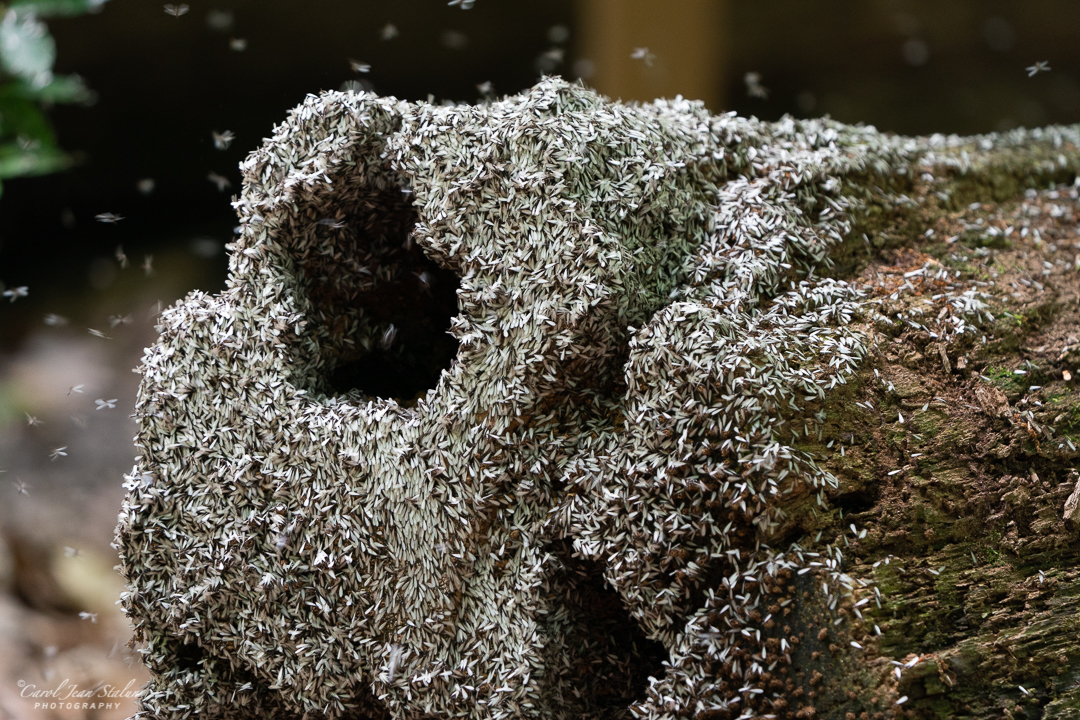
Some termite hatches can be huge. Catbirds, warblers, thrushes, and other species of birds often gather around such hatches, including species who usually stay in the treetops.
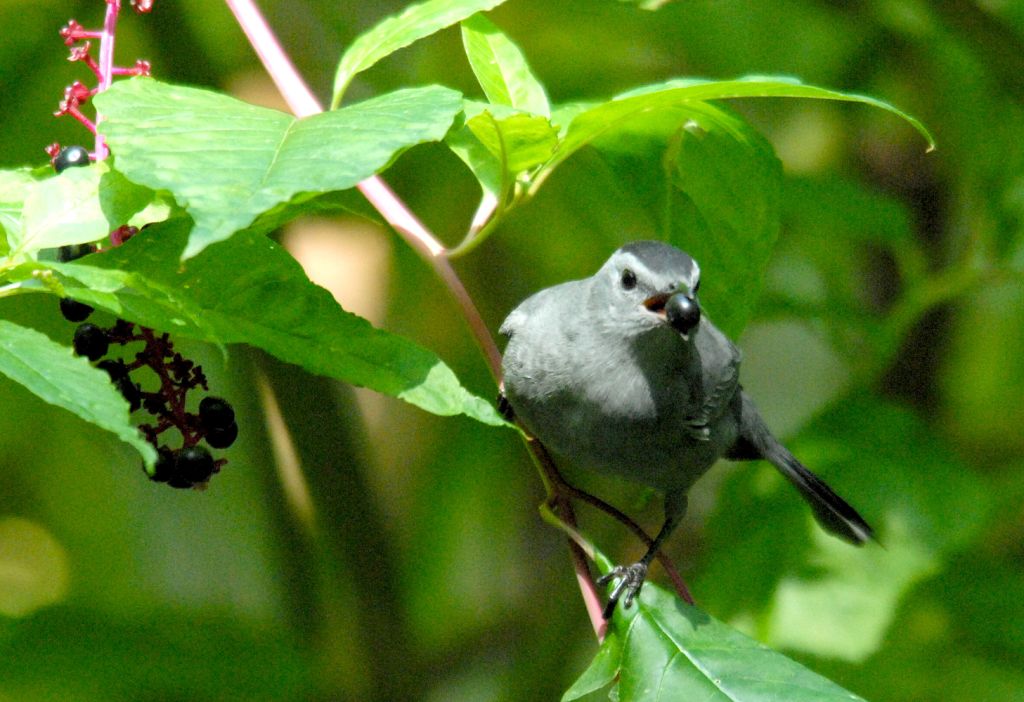
Catbirds often eat the berries on the plants at Monticello. Pokeweed (Phytolacca americana) is a common plant in the park. It is easy to identify because of the purple stem. You often can see catbirds by the stream, plucking berries from these plants.
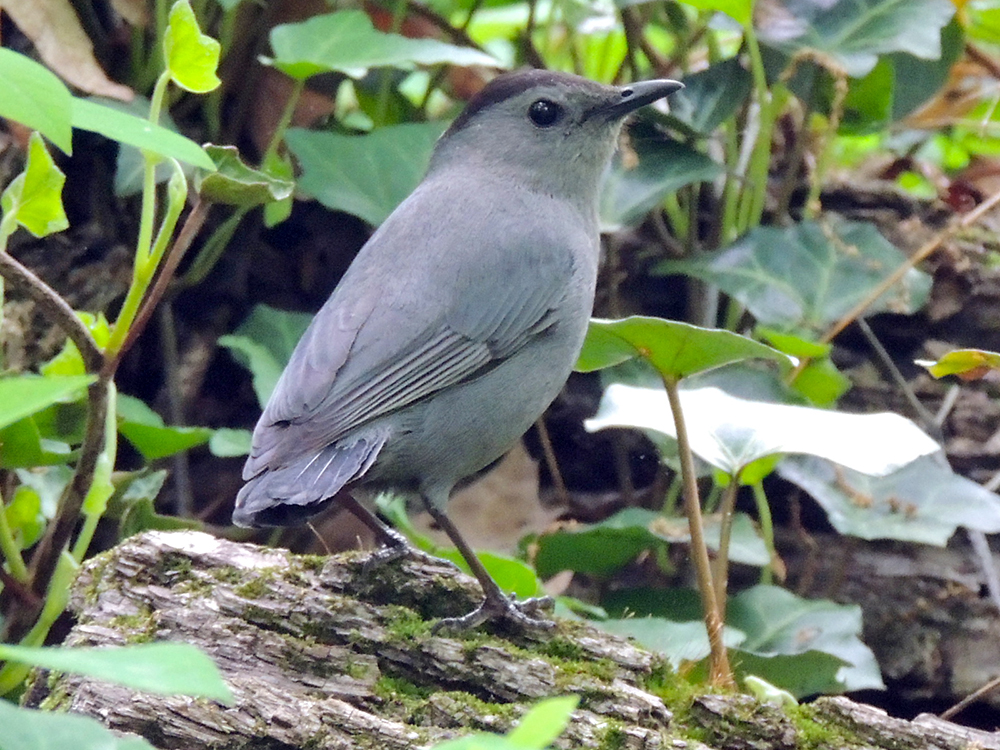
Juveniles look similar to adults. This bird without a tail was at Monticello one spring. It could have been a juvenile whose tail had not yet grown in or an adult who had lost its tail to a predator.
Vocalizations
The call of the Gray Catbird sounds like a cat's meow. The song is long and varied, and it incorporates the songs of other species.
Hear the vocalizations of the Gray Catbird.
Notes
Catbirds sound like an animal who is killing a lot of them. In 2011, scientists at the Smithsonian's Migratory Bird Center and Towson University studied mortality in suburban catbird nests. The study found that about 80 percent of baby catbirds fell victim to predators, and almost half were killed by cats. The predation rates were highest shortly after the baby catbirds left the nest when they were noisily trying to get the attention of their parents.
Origin of Names
Common Names: Gray from the plumage. Catbird from their call.
Genus Name: Dumetella means little one of the thicket.
Species Name: Carolinensis means of Carolina, which used to be a loose term for the South.
Gray Catbird video footage
Return to the Index
